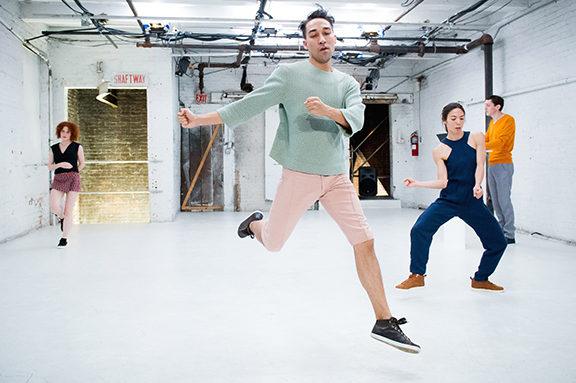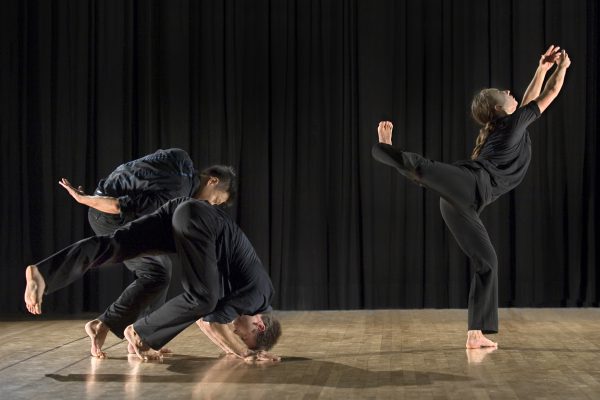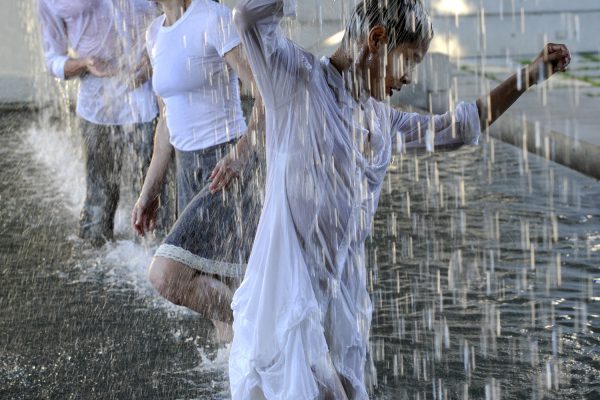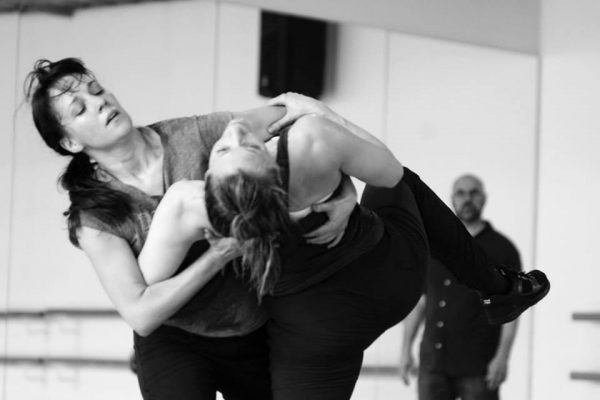One of the beautiful components of live performance is each viewer’s subjective experience and interpretation. Sitting down to Relative Collider in the basement theatre of The Dance Centre, I couldn’t help but be struck by the world of difference between this moment and finding my seat just days before at the Queen Elizabeth Theatre for Holy Body Tattoo’s monumental — a sold-out, one-night only, contemporary dance/rock show with Godspeed You! Black Emperor. Both works use abstracted quotidian gestures throughout, and despite inquiring into different aspects of the everyday (monumental is a reflection on the madness of urban life while Relative Collider contemplates the act of watching and being watched), I found the memory of the former an interesting comparison in scale and affect while taking in the latter.
Relative Collider by New York- and Paris-based Liz Santoro and Pierre Godard of Paris begins quietly and doesn’t stray far from the casual and meticulous vibe it sets up. The three dancers — Santoro with Cynthia Koppe and Canadian Stephen Thompson — walk into the space with Godard and form a line beside the pedestal that holds Godard’s laptop, a station he remains hunched over for the remaining forty-five minutes.
The piece begins with synchronized patterns of knee bends in time to Brendan Dougherty’s metronome-led score. The dancers remain impressively nonchalant as the pattern increases in complexity, eventually incorporating small hand gestures and variations in focus. A wide variety of movement vocabulary was not the aim of the work, making the specificity of what the dancers were doing all the more observable.
As Relative Collider’s journey builds slowly, Godard inserts his own spoken text, monotone in its delivery and random in its content, as the dancers pick up the pace, hopping, skipping and low-running to new locations around the stage — moving on the beat at all times. There appeared to be little to no room for improvisation within the choreography, but then again I can only guess as to the rigidity of the movement score the performers were working within.
What this seemingly simple work lacked in dynamism, it gained in space to receive and absorb imagery and connections between the dancers, Godard and the open space. Both creators have backgrounds in science, in addition to their years in dance and theatre. Their intellectualism was on display.
I started by comparing this viewing experience to monumental, which left the audience buzzing from the bombardment of stimuli; Relative Collider more quietly asks for the observant attention of the cerebra.
Tagged: Choreography, Contemporary, Performance, Stephen Thompson, BC , Vancouver






